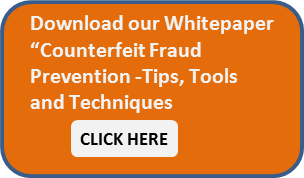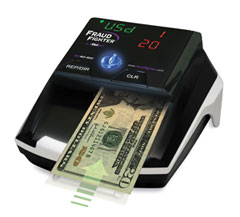 Counterfeit currency. Not something most of us think about. We think we know what it is and some of us may even have run across some fake money or know someone who has some anecdote about the time they.... Few of us, however, have ever suffered negative consequences from interaction with 'funny money.' Or so we would like to believe. Is counterfeit currency a real problem and, if so, why it so hard to detect?
Counterfeit currency. Not something most of us think about. We think we know what it is and some of us may even have run across some fake money or know someone who has some anecdote about the time they.... Few of us, however, have ever suffered negative consequences from interaction with 'funny money.' Or so we would like to believe. Is counterfeit currency a real problem and, if so, why it so hard to detect?
The United States Secret Service reports that, in 2011, $261 million in counterfeit currency was removed from circulation last year leading to 3,028 arrests. Neither of these figures seem very significant until you consider that they merely represent counterfeiting upon which the Secret Service could act, not all suspected counterfeiting activity. Remember that the more counterfeit money circulated, the more our economy is at risk. When currency literally not worth the paper it is printed on is given in exchange for goods and services, the U.S. dollar becomes devalued.
The United States has used increasingly sophisticated methods to guard against counterfeit currency, yet fake money continues to be a problem. Counterfeiting is no longer the exclusive domain of crime-syndicates, international drug cartels or foreign terrorist groups, all of whom produces passable U.S. currency in an attempt to launder money and, in some cases, undermine national security (i.e., the economic system of any country is only as strong as its integrity and nothing weakens that integrity like the diminished value or credibility of its currency).
Who else can print fake money? Why, just about anybody. Your neighbor, your boss, you. Digital technology, when combined with some creativity and patience, enables any reasonably intelligent person to counterfeit U.S. currency. High speed computers with the latest software, high definition scanners and high resolution printers make it possible to create reasonable facsimiles of any U.S. bill.
Of course, one would need to know what to do. Funny thing is, information is readily available to anyone who can navigate a search engine. Type in "How to counterfeit money" and you will receive countless results, including detailed analyses of how counterfeiting works, why it works and how to tell distinguish between real and fake American money. In fact, you can even learn from Frank Abagnale, now a security consultant who was once considered one of the greatest fraud artists and imposters of all time. With these resources, it is possible for you or anyone to create American money capable of deceiving the casual observer. 
And what of the clerk or store owner who handles money with some frequency? Clearly, fake money that only looks real isn't going to be enough to fool them. It must feel like real money. As it turns out, there are ways to alter real currency or acquire paper similar enough to that on which real money is printed that, again with diligence and intelligence, enables the counterfeiter to generate funny money that feels like real money.
As long as the counterfeiter isn't caught, this is a crime that pays. Access to the technology and resources necessary to engage in counterfeiting is more readily available than ever. As a result, it has become even more important to detect counterfeit currency. There are tools now available that are designed to assist even the smallest business owner in detecting counterfeit money. Given the size of the problem and the potential risk to your profit margin (if not your business survival), it would serve you greatly to invest in the counterfeit detection device appropriate for you.
.


